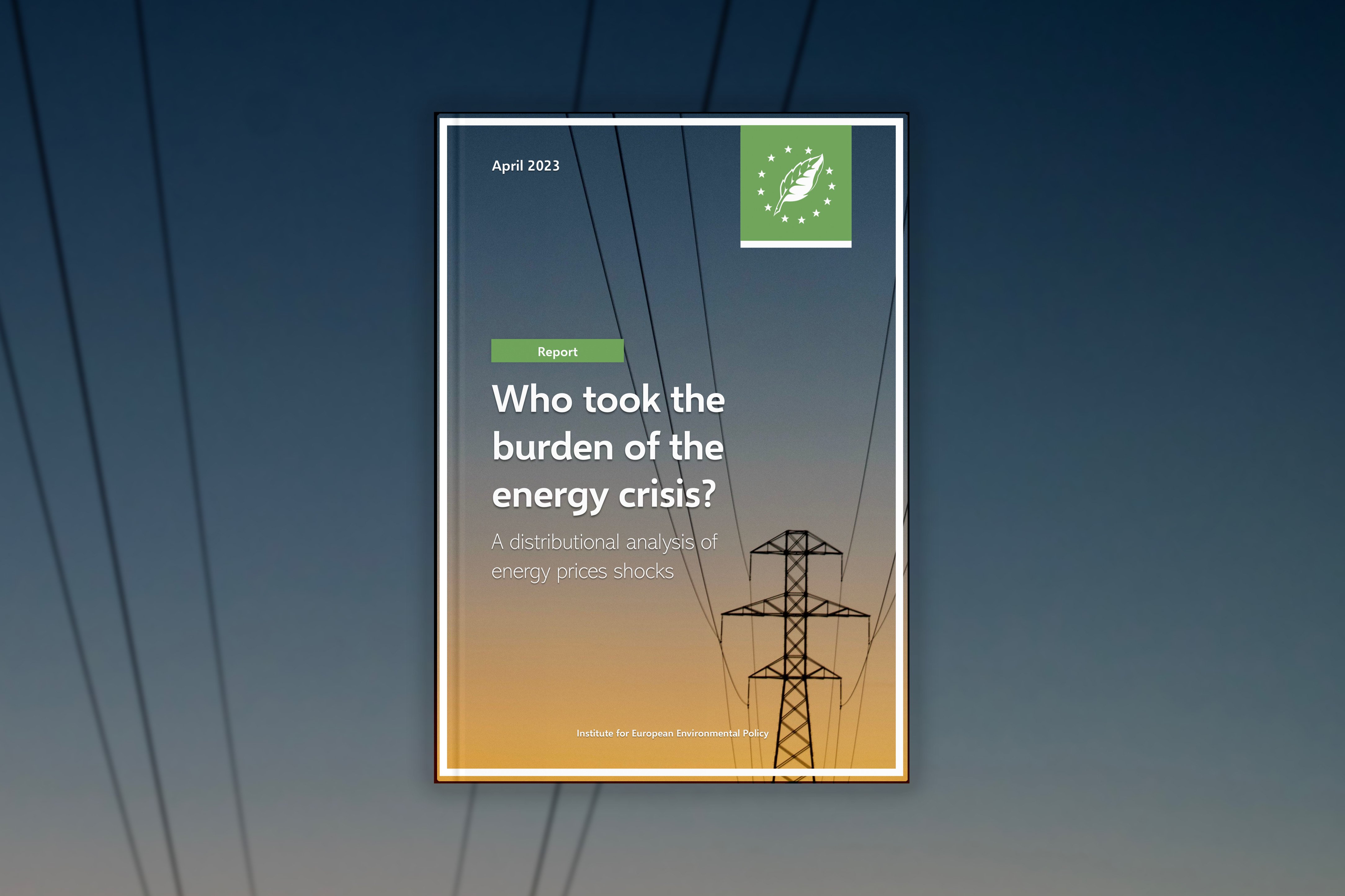AUTHORS: Xaquín García-Muros (BC3), Claudia Dias Soares (IEEP), Jesus Urios (IEEP), and Eva Alonso-Epelde (BC3)
This report analyses the effect of the energy prices spike on European households’ welfare and provides a granular analysis of the socio-economic impact of energy prices in 2022. It includes a sensitivity analysis that explores the distributional impact of some policies adopted by governments to mitigate the consequences of high energy prices for households.
Following the 2022 energy crisis, several measures to mitigate the impact of the surge in prices and shield both energy intensive industries and families, were taken both at the EU and national levels. At Member State (MS) level, 657 billion euros were allocated to finance market price support these measures. Though the actions taken are similar given their contextualisation within the framework agreed at the EU level, they differ between MS, according to their national, budgetary, and governmental realities. These measures span from reductions of energy taxes, including reductions in excise duties on petrol and diesel and in VAT, to direct transfers to vulnerable groups in the form of expanding social tariffs or one-time payments to households.
This report analyses the effect of the energy prices spike on European households’ welfare and provides a granular analysis of the socio-economic impact of energy prices in 2022. It includes a sensitivity analysis that explores the distributional impact of some policies adopted by governments to mitigate the consequences of high energy prices for households.
We developed a microsimulation model using household data available in the Household Budget Survey of each Member State that allowed us to simulate the distributional and social impact of the energy prices spike at a household level. The rich representation of households in these surveys allowed us to develop vertical distributional impact analysis (by income level), as well as horizontal distributional impact analysis (i.e., by other socio-demographic characteristics of the households).
Altogether our results underpin a broad call for an improvement of the policy toolbox against energy poverty at MS level.
In particular:
- There was a regressive distributional impact of the 2022 energy crisis, which is mainly attributed to the impact of the rise of electricity prices.
- The impact on welfare varied across Member States: Western European countries showed a clear regressive pattern, though with different configurations, Eastern European countries had a progressive distributional impact, whereas some other countries, such as France and Sweden, followed a moderate regressive pattern explained not only by MS own energy mixes and consumption structures, but also by the differences on how each country managed to contain the rise of energy prices.
- Energy consumption patterns and impacts tend to be not only income-dependent, but also gender-, age-, and location-dependent.
This report advocates for:
- Policy measures to address energy poverty should account for national particularities, and consider income, gender, age, and location of the targeted groups.
- Governments should prioritise interventions to control rises in electricity prices vis-à-vis measures to address rises in fuel prices.
- To alleviate energy poverty in an energy crisis context, support measures in the form of direct transfers to most vulnerable groups should take precedence over broad support measures operated through tax reductions.
© Photo by Max Lederer on Unsplash


